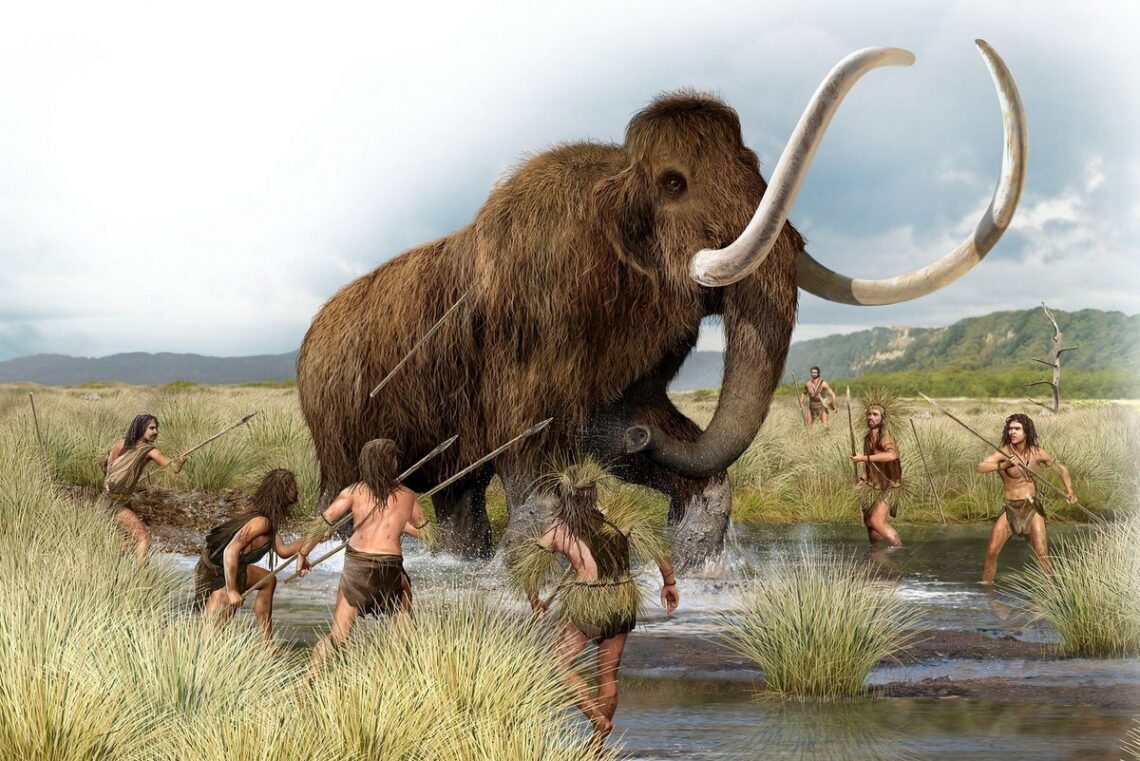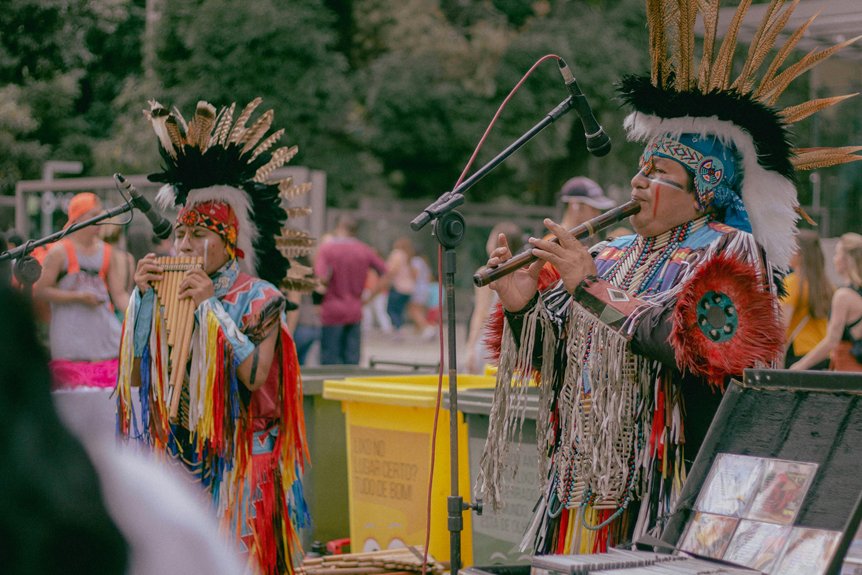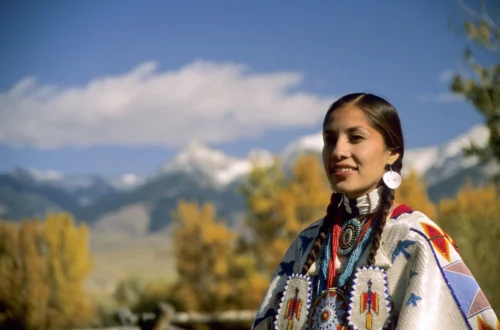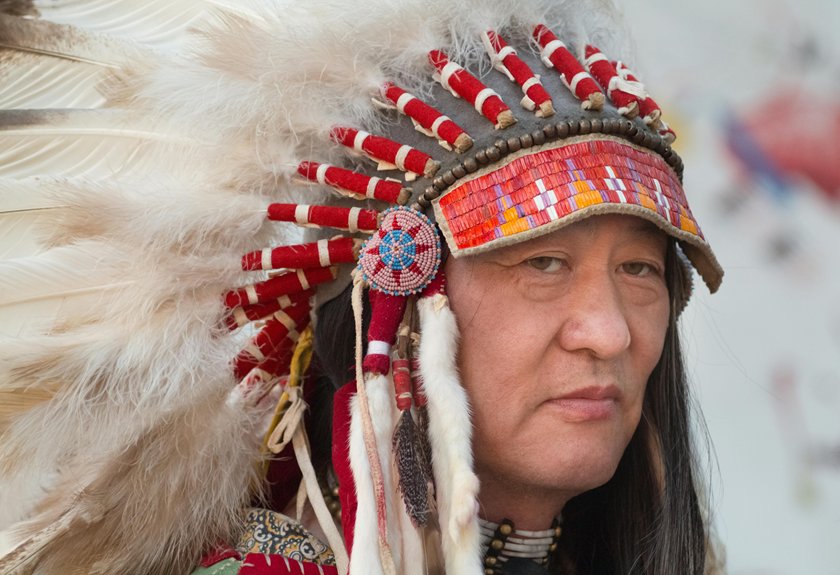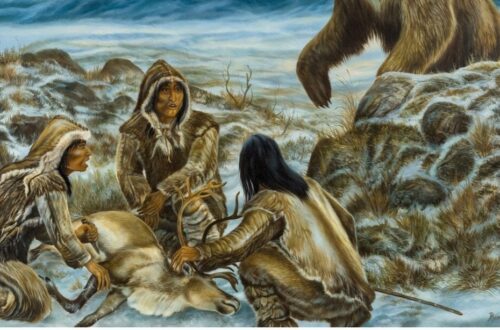Imagine standing on the ancient Beringia land bridge, where the icy winds whisper stories of the first inhabitants who crossed into North America. These early Native Americans, driven by survival, forged unique cultures across vast landscapes. As you explore their rich traditions and languages, a complex narrative unfolds, revealing their deep connection to the land. But what happened when they first encountered Europeans, and how did that shape their legacy?
The Migration Theory: Beringia and the First Inhabitants
The Migration Theory posits that the first inhabitants of North America crossed a land bridge known as Beringia, which once connected Asia and North America during the last Ice Age. This migration likely occurred around 15,000 to 20,000 years ago, as people followed herds of large animals in search of food.
You might find it fascinating that these early groups adapted to diverse environments, leading to a rich tapestry of cultures across the continent. They developed unique languages, traditions, and ways of life, deeply connected to the land.
Understanding this migration helps you appreciate the resilience and ingenuity of these early peoples, who laid the foundation for the diverse Native American cultures we recognize today.
Archaeological Evidence of Early Settlements
As early groups settled across North America, archaeological evidence sheds light on their lives and adaptations.
Sites like Monte Verde in Chile and the Clovis culture in the U.S. reveal sophisticated hunting practices and tool-making skills. You’ll find remnants of dwellings, fire pits, and food storage that indicate a deep understanding of the environment.
Artifacts such as pottery and carved objects show their creativity and cultural expressions. These findings help you appreciate the complexity of their societies, illustrating how they interacted with nature and each other.
Cultural Diversity Among Native American Tribes
While exploring the rich tapestry of Native American tribes, you’ll discover an incredible range of cultures, languages, and traditions that have evolved over thousands of years. Each tribe possesses its unique customs, beliefs, and art forms, reflecting their distinct environments and histories.
For instance, the Navajo are known for their intricate weaving and storytelling, while the Lakota emphasize their spiritual connection to the land through ceremonies. You’ll also find variations in social structures, governance, and subsistence practices, from fishing communities of the Pacific Northwest to the agricultural societies of the Southwest.
This cultural diversity enriches the heritage of Native Americans, showcasing their resilience and adaptability. Engaging with these varied traditions fosters a deeper understanding and appreciation of their enduring legacies.
Language Families and Communication
Understanding the diverse language families among Native American tribes reveals not only the complexity of their communication but also the deep connections to their cultural identities. Over 300 languages belong to several major families, such as Algonquian, Siouan, and Uto-Aztecan. Each tribe’s language reflects its history, traditions, and worldview.
For example, storytelling serves as an essential tool for passing down knowledge and preserving culture. Additionally, the nuances in language often express the tribe’s relationship with nature and community. By learning about these languages, you gain insight into the rich tapestry of Native American life.
Respecting and valuing these languages is imperative in honoring the heritage and ongoing resilience of Native peoples across the continent.
Spiritual Beliefs and Connection to the Land
Native American spiritual beliefs are deeply intertwined with the land, shaping their understanding of existence and community.
You’ll find that many tribes view the Earth as a living entity, deserving of respect and care. This connection fosters a sense of responsibility, encouraging sustainable practices that honor the environment.
Rituals and ceremonies often celebrate the changing seasons, acknowledging the cycles of life and the interconnectedness of all beings. Through storytelling and oral traditions, you can see how ancestors impart wisdom about nature and its sacredness.
The Impact of European Contact on Indigenous Peoples
The arrival of European settlers marked a profound shift for Indigenous peoples across the Americas, disrupting their spiritual and cultural connection to the land.
As you explore this history, you’ll see that European contact brought new diseases, devastating Indigenous populations. You’ll also notice how trade altered traditional practices, introducing European goods while simultaneously undermining local economies.
The imposition of foreign governance led to land dispossession, forcing many Indigenous communities into unfamiliar lifestyles.
Despite these challenges, Indigenous peoples displayed resilience, adapting and preserving their cultures amidst significant changes.
Understanding this impact is essential in recognizing the injustices faced and the ongoing struggles for rights and recognition in today’s world. Their stories are significant, reminding us of their enduring strength and connection to the land.
